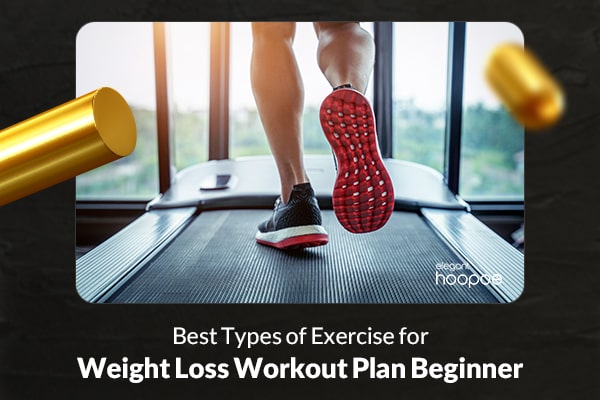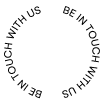If you want to lose weight, you have a challenging task ahead. But don’t worry! A weight loss workout plan beginner can be a great way to start. Exercise is an important part of any weight loss program! Why?! Because it can help you burn calories, increase your metabolism, and build muscle. But if you’re new to working out, it can be hard to know where to start.
Following a good beginner workout plan should be easy, it must include a variety of exercises, and be tailored to your fitness level. Remember that weight loss is a gradual process and that results won’t happen overnight. By sticking to a consistent workout routine and making healthy lifestyle choices, you can achieve your weight loss goals over time. weight loss for beginners exercises
In this article of Elegant Hoopoe, we will discuss a workout plan for beginners to lose weight that is designed to help you reach your goals. In this step-by-step guide, we outline the best weight loss exercises you should do, the frequency and duration of each exercise, and how to progress as you get stronger. By following these guidelines, you can set yourself up for success on your weight loss journey. We hope this beginner workout plan will set you on the right track toward your weight loss goals. So, let’s get started!
Related services:
The Role of Exercise In Weight Loss
When it comes to weight loss for beginners exercises, diet, and exercise are two main factors to consider. Although both of them are important for achieving a healthy weight, exercise plays a crucial role, especially for beginners. Truly, how exercise helps with weight loss and what types of exercise are most effective.
We all know that exercise helps to burn calories, which is essential for weight loss. When you engage in physical activity, your body burns calories to power your movements. The more intense the exercise, the more calories you’ll burn. This calorie burn can help create a calorie deficit, which is when you burn more calories than you consume. This is necessary for weight loss, as a calorie deficit forces your body to use stored fat for energy.
Additionally, exercise helps to increase your metabolic rate, which is the rate at which your body burns calories at rest. Meaning even when you’re not actively exercising, your body will be burning more calories than it would if you were sedentary. Over time, this increased metabolic rate can lead to significant weight loss.
Although all types of exercise results are not equal in weight loss, any physical activity is better than none! Some types of exercise are more effective at burning calories and increasing metabolic rate than others. In the following sections, we’ll explore the best types of exercise for weight loss, including cardiovascular exercises, strength training, and HIIT workouts.
Related article: Pear Shaped Body
The Importance of Warm-Up and Cool-Down Exercises
Warm-up and cool-down are essential components of any workout, and a beginner workout plan to lose weight is not excluded. It is recommended to spend at least 5-10 minutes warming up before each workout. Exercises such as light cardio, dynamic stretching, and mobility exercises help prepare your body for exercise. They also help increase blood flow to your muscles, reduce the risk of injury, improve performance, and promote recovery.
For getting the most out of your workouts and staying injury-free, it is recommended also to Spend the final 5-10 minutes cooling down exercises. Exercises such as static stretching, foam rolling, and light cardio allow your body to recover after completing a workout. They also help to lower your heart rate and breathing rate, prevent blood from pooling in your legs, stretch out your muscles, reduce soreness, and promote flexibility.

Best Types of Exercise for Weight Loss Workout Plan Beginner
Cardiovascular Exercise
Cardiovascular exercise or cardio is a type of workout that raises your heart rate and increases oxygen consumption in the body. Cardio workouts are an effective way to burn calories and aid in weight loss. Some examples of cardio exercises include running, cycling, swimming, and jumping rope.
When performing cardiovascular exercise, it’s essential to find a pace that challenges you but doesn’t leave you feeling exhausted. For beginners, starting with 20-30 minutes of cardio exercise, three to four times a week is a good place to start. Gradually increase your workout time and frequency as your fitness level improves.
Remember, the key to successful weight loss through cardio exercise is consistency. Aim to maintain a regular cardio routine and gradually increase the intensity and duration of your workouts. Pairing cardio with a healthy diet and strength training can help you achieve your weight loss goals more effectively.
Strength Training
Strength training, resistance training, or weight lifting, is an important component and just one part of a well-rounded weight loss workout plan. Building lean muscle mass through strength training can help you burn more calories even when you’re at rest. Pair strength training with cardio exercise and a healthy diet to achieve your weight loss goals and improve your overall fitness and health.
There are a variety of strength training exercises that you can do, ranging from bodyweight exercises like push-ups and squats to using weights or resistance bands.
Choose exercises that be beneficial for your fitness level and goals. A full-body strength training routine that targets all major muscle groups, such as the chest, back, legs, arms, and core, is a good place to start.
When strength training, it is best to perform 8-12 reps of each exercise, using a weight that challenges you but allows you to maintain proper form. With improving strength, you can gradually increase the weight and number of reps. It’s recommended to give your muscles time to rest and recover between strength training sessions.
Related article: What is Pilates? Is Pilates Good for Weight Loss?
HIIT Workouts
High-Intensity Interval Training (HIIT) involves a short period of intense exercise and then brief periods of rest or active recovery. These workouts can burn a high number of calories in a short time, thus incorporating HIIT workouts into your beginner workout plan can be an effective tool for maximum weight loss and improved fitness.
HIIT workouts such as jumping jacks, burpees, and sprinting increased calorie burning because doing them require a lot of energy. You burn a significant amount of calories in a short time with them. In Addition, the high-intensity nature of these workouts can increase your metabolic rate, and you’ll continue to burn calories even after the workout.
HIIT workouts are also effective at burning fat, especially belly fat. High-intensity exercises activate the body’s fat-burning mechanisms, which can lead to significant weight loss over time. They also elevate your heart rate, challenge your cardiovascular system, and finally lead to improved cardiovascular fitness, and you’ll be able to exercise harder and longer.
If you are busy and don’t have much time to devote to exercise, HIIT workouts are typically shorter than traditional workouts, thus are a great option for you. Start with shorter, less intense HIIT workouts and gradually increase the duration and intensity over time. Listen to your body and rest when needed, as HIIT workouts can be challenging.
Gym Workout Plan for Weight Loss Beginners
For female beginners looking to lose weight at the gym, it’s important to have a structured workout plan that includes both cardio and strength training exercises. A sample gym workout for beginners to lose weight includes:
- Warm-up: For getting your heart rate up and your muscles warmed up, start with a 5-10 minute warm-up on the treadmill.
- Cardio: Do at least 30 minutes of cardio exercise, such as running, cycling, or using the rowing machine to help burn calories and improve your cardiovascular fitness.
- Strength training: Squats, Lunges, Bench press, Shoulder press, Rows. Bicep curls, Tricep extensions, Ab crunches, and Planks are some exercises to include in your strength training routine to help build lean muscle mass and boost your metabolism. Do at least 2-3 sets of 8-12 repetitions of each exercise.
- Cool-down: For lowering your heart rate and preventing injury, finish your workout with a 5-10 minute cool-down on the treadmill.
Remember that as a beginner, you may need to start with lighter weights and fewer repetitions. Focus on proper form and gradually increase the weight and repetitions over time.
To maximize weight loss, it is recommended also incorporate HIIT into your cardio routine. It is best to alternate between short bursts of high-intensity exercise and brief periods of rest or active recovery. HIIT can help to burn more calories in less time and improve your overall fitness. For female weight loss workout plans for beginners, consult with a trainer or medical professional before starting any new workout plan and listen to your body, taking breaks when needed.
Related article: Yoga for Weight Loss: How Yoga Helps You Lose Weight?
Creating a Balanced Workout Routine
A balanced workout routine includes a mix of cardiovascular exercise, strength training, and flexibility work. Here are some tips for creating a well-rounded weight loss workout plan:
- Incorporate Cardiovascular Exercise: Aim to include 20-30 minutes of cardio exercise, such as running, cycling, or swimming, 3-4 times per week. Gradually increase the duration and intensity of your workouts as your fitness level improves.
- Add Strength Training: Include strength training exercises that target all major muscle groups, such as the chest, back, legs, arms, and core. Aim to strength train 2-3 times per week, with rest days in between.
- Incorporate Flexibility Work: Stretching and flexibility exercises can help improve range of motion, prevent injury, and aid in recovery. Include stretching and/or yoga into your workout routine 1-2 times per week.
- Allow for Rest and Recovery: It’s important to give your body time to rest and recover between workouts. Aim for at least 1-2 rest days per week.
- Gradually Increase Intensity: As your fitness level improves, gradually increase the intensity and duration of your workouts to continue challenging your body.
Remember, the key to a successful weight loss workout plan is consistency. Aim to maintain a regular workout routine and gradually make adjustments as needed to keep yourself challenged and motivated.

Common Mistakes to Avoid in Your Weight Loss Workout Plan Beginner
Starting a new workout plan can be exciting, but it’s important to avoid common mistakes that can hinder your progress or even lead to injury. Here are some mistakes to avoid in your beginner workout plan:
- Skipping Warm-up and Cool-down: Failing to warm up properly before a workout or cool down afterward can increase the risk of injury. Be sure to spend 5-10 minutes warming up with light cardio and dynamic stretching, and cool down with static stretching to prevent muscle soreness and injury.
- Overtraining: Doing too much too soon can lead to burnout, fatigue, and injury. Start slowly and gradually increase the intensity and duration of your workouts over time.
- Poor Form: Using improper form during exercises can put stress on your joints and muscles, increasing the risk of injury. Take the time to learn proper form from a trainer or through online resources before attempting new exercises.
- Neglecting Rest and Recovery: Giving your body time to rest and recover between workouts is crucial for avoiding injury and allowing your muscles to repair and grow. Make sure to include rest days in your workout plan and prioritize sleep and recovery.
- Focusing Solely on Cardio: While cardiovascular exercise is important for weight loss and overall health, neglecting strength training can lead to loss of muscle mass and a slower metabolism. Be sure to incorporate strength training into your workout plan to build lean muscle mass and burn more calories.
By avoiding these common mistakes, you can make the most of your beginner workout plan and achieve your weight loss and fitness goals safely and effectively.
Adjusting Your Weight Loss Workout Plan Beginner as You Progress
Adjusting your workout plan is a natural part of the fitness journey and can help you continue making progress toward your weight loss and fitness goals. Adjust your workout plan as you progress, because it is important to continue challenging your body and avoiding plateauing. Here are some tips for adjusting your workout plan as you progress:
- Increase Intensity: Gradually increase the intensity of your workouts by adding more weight, increasing the duration or speed of your exercises, or reducing the rest time between sets. This can help you break through plateaus and continue making progress.
- Change Up Your Routine: Incorporate new exercises or try different equipment to keep your workouts challenging and interesting. This can also help prevent overuse injuries and target different muscle groups.
- Track Your Progress: Keep track of your workouts, measurements, and weight loss progress. This can help you see how far you’ve come and identify areas where you may need to make adjustments.
- Listen to Your Body: Pay attention to how your body feels during and after workouts. If you experience pain or discomfort, reduce the intensity or take a break to allow your body to recover.
- Consult with a Trainer: Consider working with a personal trainer who can help you create a customized workout plan and provide guidance on adjusting your plan as you progress.
Related article: The Best Weight Loss Exercises
Conclusion: Celebrating Your Progress and Continued Success.
Congratulation! You take the first step towards your weight loss journey by starting a beginner workout plan! We all know that weight loss is a process that takes time, patience, and consistency. Maximize your weight loss results by incorporating cardiovascular exercise, strength training, and creating a balanced workout routine, you can
As you progress, adjust your workout plan to continue challenging your body and avoiding plateauing. And don’t forget to stay motivated by setting achievable goals, tracking your progress, and celebrating your successes along the way.
Most importantly, remember to enjoy the journey and embrace the lifestyle changes that come with it. A healthy and active lifestyle can lead to not only physical benefits but also mental and emotional well-being. Be patient, stay committed, and enjoy the process. Finally, you celebrate every milestone on your weight loss journey. You’ve got this!







